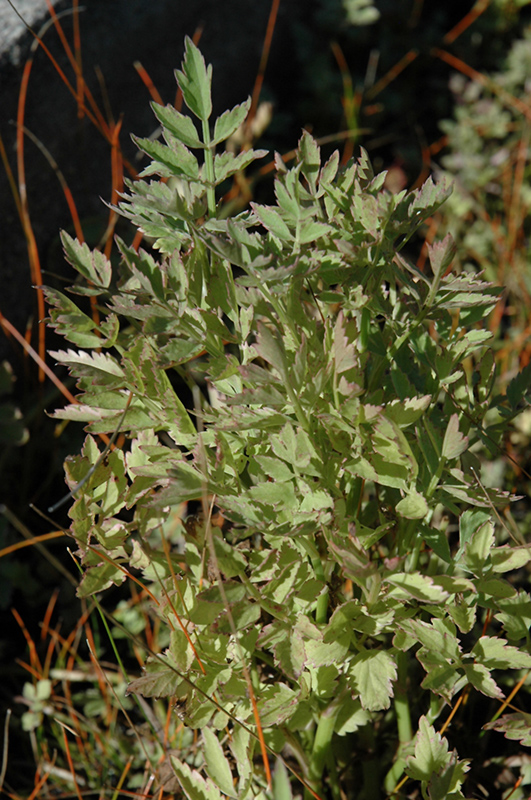Height: 15 inches
Spread: 30 inches
Sunlight:
![]()
![]()
Hardiness Zone: 4
Other Names: Water Parsley, Java Dropwort
Description:
This parsley relative produces beautiful, lacy foliage that is light green, that may be dappled with pink; grown for foliage, flowers are not showy; control by clipping back runners; excellent for hanging baskets or containers; prefers moist site
Ornamental Features
Water Celery's attractive crinkled ferny leaves remain light green in color throughout the season on a plant with a spreading habit of growth.
Landscape Attributes
Water Celery is an herbaceous perennial with a low habit of growth, spreading atop the surface of the water. Its relatively fine texture sets it apart from other garden plants with less refined foliage.
This plant will require occasional maintenance and upkeep, and can be pruned at anytime. Gardeners should be aware of the following characteristic(s) that may warrant special consideration;
- Invasive
Water Celery is ideally suited for growing in a pond, water garden or patio water container, and is recommended for the following landscape applications;
- General Garden Use
- Water Gardens
- Naturalizing And Woodland Gardens
- Bog Gardens
Planting & Growing
Water Celery will grow to be about 12 inches tall at maturity, with a spread of 30 inches. Its foliage tends to remain dense right to the water, not requiring facer plants in front. It grows at a fast rate, and under ideal conditions can be expected to live for approximately 10 years. As an herbaceous perennial, this plant will usually die back to the crown each winter, and will regrow from the base each spring. Be careful not to disturb the crown in late winter when it may not be readily seen!
This plant does best in full sun to partial shade. As an aquatic plant, it requires a suitable water garden environment and will benefit from special planting and ongoing care practices; consult one of our in-store experts for further details and instructions. It is not particular as to soil type or pH. It is somewhat tolerant of urban pollution. This species is not originally from North America. It can be propagated by cuttings.

